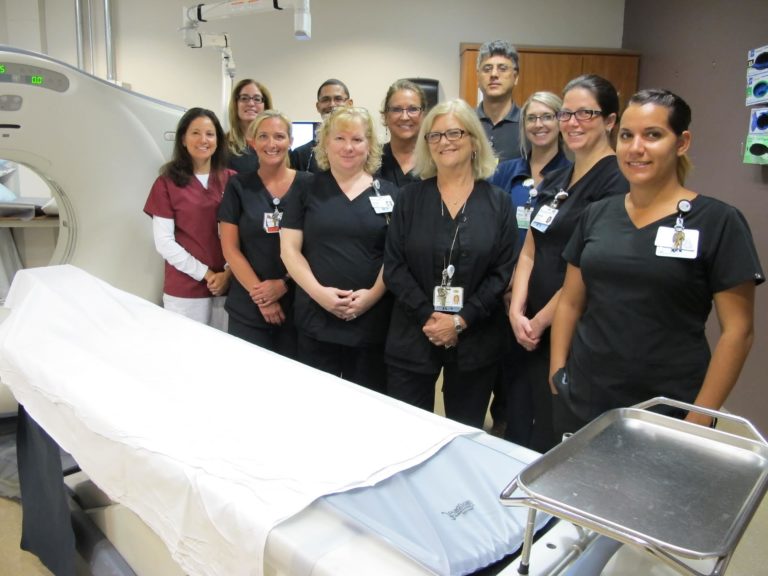
South Florida Baptist Hospital has once again received an award for its care for stroke patients.
When a patient has a stroke, they race against the clock for successful recovery. South Florida Baptist Hospital knows time is of the essence, a belief shown in both its designated stroke teams and repeated recognition for its care.
Last month, the hospital received the American Heart Association/American Stroke Association’s Get with the Guidelines Stroke Gold Plus Quality Achievement Award for the third time. Competing with hospitals of similar size and capabilities across the country, SFBH set itself apart by its commitment to ensuring stroke patients receive the most appropriate treatment according to the new and constantly updating national guidelines.
“We make stroke alerts the same as a code,” said Gidget Butler, R.N. Emergency Services Nurse Manager. “We do an awful lot of education and chart review. We literally look at every stroke patient’s chart and see how we handled it and where we could have gone faster.”
A stroke occurs when the blood supply to the brain is stopped or reduced, which can cause brain cells to die within minutes once brain tissues fail to receive oxygen and nutrients.
The faster a stroke patient gets medical help, the higher chance they have of keeping brain cells from dying. Strokes are the fifth-highest cause of death and a leading cause of adult disability in the United States, according to the American Heart Association/American Stroke Association. In the U.S. someone suffers from a stroke on average every 40 seconds and 795,000 people suffer a new or recurrent stroke each year.
Doctors use the acronym FAST to explain how people can identify the sudden signs of a stroke.
“F” stands for face drooping. Asking the person in question to smile can determine if the face is numb and sagging. “A”
stands for arm weakness. If one arm is weak or numb or drifts downward when lifted it could indicate a stroke. “S” stands for speech difficulty. Slurred speech, lack of any vocal communication or having difficulty understanding what they are being told are common with strokes. Ask them to repeat a simple sentence. “T” stands for time to call 911. If someone shows even one of the three symptoms they should call 911 immediately.
Butler recommends calling an ambulance so medical assistance can be administered immediately.
“We are a small town and people think they can just drive in because it doesn’t take very long to get here from any corner of the city,” Butler said. “But what they don’t realize is so often with medical emergencies — especially strokes — is that every second counts. If they come in an ambulance the EMT can begin treatment on the journey to the hospital.”
She said occasionally the symptoms of a stroke may resolve on their own, which misleads people into assuming they are better or that it was just a fluke. More often than not the relief is temporary and the symptoms return in full force. It is better to call, come in and not need it than to wait because you are unsure of the severity of the situation.
When a stroke patient is called in the designated stroke team meets them at the door, treating the situation as seriously as they would if a patient stopped breathing or flatlined. Last year alone SFBH saw nearly 450 stroke alerts, according to Beverly Littlejohn, communications coordinator for SFBH. Of those 162 were confirmed strokes and the other 281 were rule-outs.
Of all the demographics, Butler said women are statically on the rise for the number of strokes called in each year. Risk factors such as obesity, smoking and stress often play a role in the diagnosis. Outside of the FAST acronym, the patient may also have trouble seeing with one or both eyes, have a severe headache or have trouble walking.
Once they are met by the stroke team the patient is transported immediately for a computerized axial tomography scan (CAT scan) to determine if there is bleeding on the brain. If not, they are given a “clot buster” medicine, which dissolves the clot and returns the flow of oxygen to the brain.
If there is bleeding, the patient is stabilized using certain medicines, blood pressure and other readings are checked to determine if they need to immediately go to a neurosurgeon or not.
“It’s amazing watching a patient that comes in not moving and that can’t speak and after treatment I literally see them walk out of here in two or three days,” Butler said. “We really are a community hospital. These are our friends and family. It’s so crucial to us everyone that walks in those doors gets the best treatment.”
